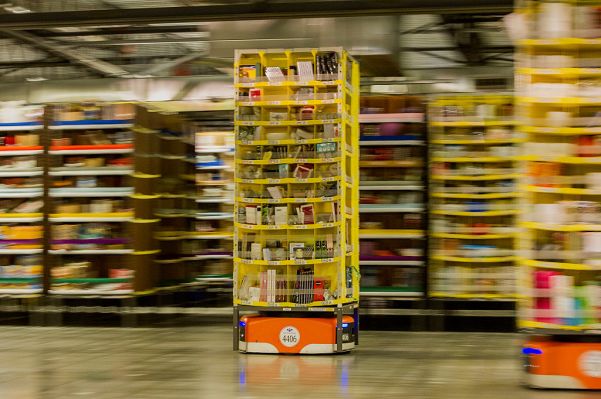I visited Boston last week and met with a number of robotics researchers, startups and established companies — more on that later — in the lead up to TechCrunch’s fourth annual TC Sessions Robotics + AI in early March. A big part of prepping for that event and my recent trip involved surveying some of the biggest funding raises from the past year.
A quick survey of these trends finds most investments concentrated in a handful of key categories. From there, we can get a pretty clear view of what the robotics industry will look like in the coming years and the roles we can expect these machines to play in our daily lives.
The definition of robotics is, of course, broad and only getting broader, as these technologies grow and mature. It’s worth noting that for the sake of my own research, I’ve mostly excluded autonomous driving — one of the key targets of robotics investment. It is, perhaps, an arbitrary distinction that has more to do with the way we categorize technologies — placing them in automotive or mobility, as opposed to robotics.
Artificial intelligence startups, too, are included sparingly for similar reasons. With those caveats in mind, these verticals have been the key focuses of robotics investments: warehouse automation/fulfillment, construction, retail/food, agriculture and surgical/medical.
The categories pretty comfortably qualify for one or more of what roboticists qualify as the three Ds: dull, dirty and dangerous. These are the jobs employers often continue to have trouble staffing, even during times of high unemployment. For that reason, they’re precisely the ones companies are seeking to automate — and that’s certainly the line technologists will use to push back on any concerns over robots displacing humans from jobs.
Fulfillment and logistics are a bit of a no-brainer, as Amazon has completely shifted end-user expectations regarding next and same-day delivery. The company’s 2012 acquisition of Boston-based Kiva Systems accelerated its push into practical daily robotic usage, and its nationwide fulfillment centers are a shiny showcase of real-world robots. The 100,000 robots figure is a couple of years old now, and Amazon has no doubt grown substantially past that as it has pushed to automate things behind the scenes.
I met with the heads of Berkshire Grey last week shortly after the company made a splash with a $263 million raise. It’s still playing all partner announcements close to the vest, so it doesn’t lose competitive advantages. I did, however, view some demos of existing warehouses utilizing the company’s top-to-bottom solutions and was impressed by the sorts of bespoke solutions it’s capable of delivering for those who still hope to keep pace with the Amazons of the world.
SoftBank was the lead in that round; I visited its subsidiary Boston Dynamics the same day and discussed Handle, the wheeled robot it plans to transform into a box-delivery platform. Asked how it separates its play from the likes of Berkshire and (fellow SoftBank investment) Fetch, a rep noted that Handle is more plug and play and can be introduced into a warehouse setting with less of an infrastructure overall. In fact, it occupies a similar space as Agility’s two-legged Digit, which is currently being tested for potential deployment by Ford.
It’s admittedly a pretty broad category, which includes safety systems like Realtime Robotics ($11.7 million raise in October), assistive exoskeletons from companies like Ekso Bionics ($100 million raise early last year) and AI solutions from the likes of Osaro ($16 million in October).
Like fulfillment, health and surgical is a category that’s been using real-world robotics in practice for some time now. Intuitive’s da Vinci system was approved by the FDA a full 20 years ago, and a number of startups are exploring other approaches to the space. Think Surgical, HistoSonics and Auris have raised large rounds in the past year, while companies like Diligent and Labrador have raised for other medical and assisted-living purposes. The category is overflowing with potential for startups, both in terms of automating difficult-to-staff jobs and creating a level of precision that’s difficult (or impossible) to replicate with human surgeons.
Construction and agriculture are high on the list of categories that have staffing difficulty, which may be why Built, Toggle and Dusty have all had recent raises as they work to bring robots to job sites. On the agtech side, FarmWise and Augean are among many companies working to bring robotics into the field.
Above all, it seems safe to say that investors have gone back to the drawing board when it comes to consumer electronics. It’s safe to say that startups will continue to chip away at the category for the foreseeable future. But Roomba aside, robotics is very much the domain of enterprise and industrial, and high-profile failures like Anki, Jibo and Kuri have likely only added fuel to that fire.
It’s true that even a well-positioned company with plenty of smart people and experience can still fail. Rethink is a prime example, helping to pioneer the category of industrial cobots (collaborative robots), but the category has had enough real-world success stories to make a continued focus for investors.
